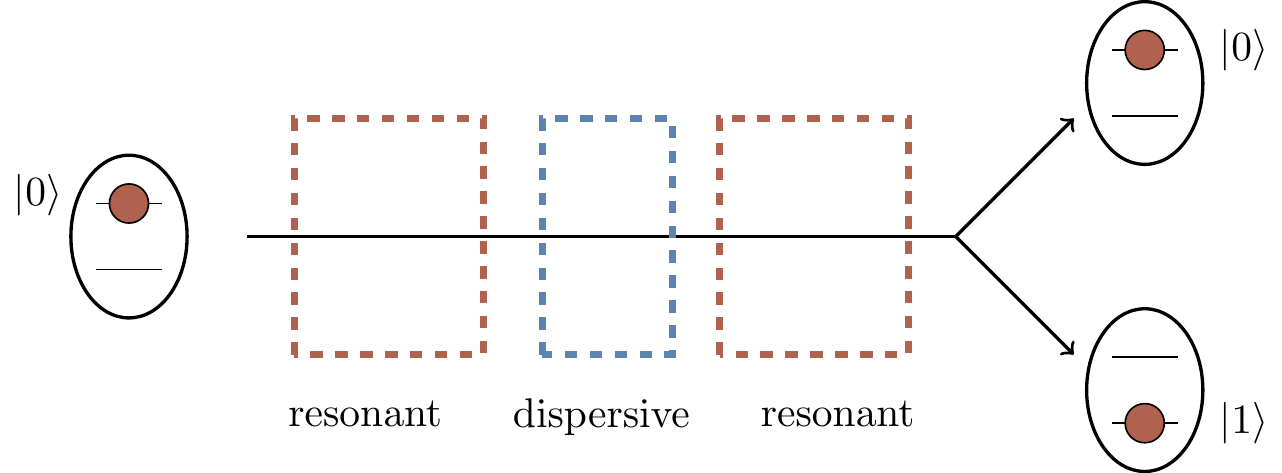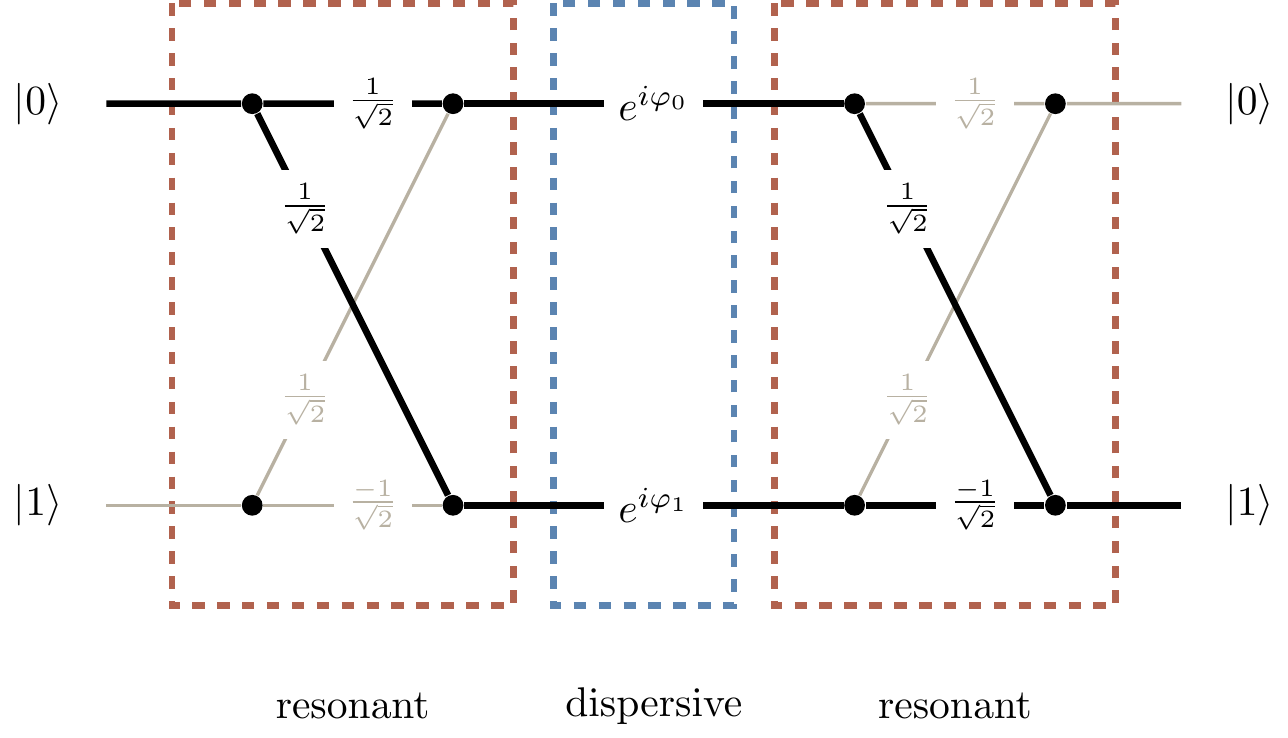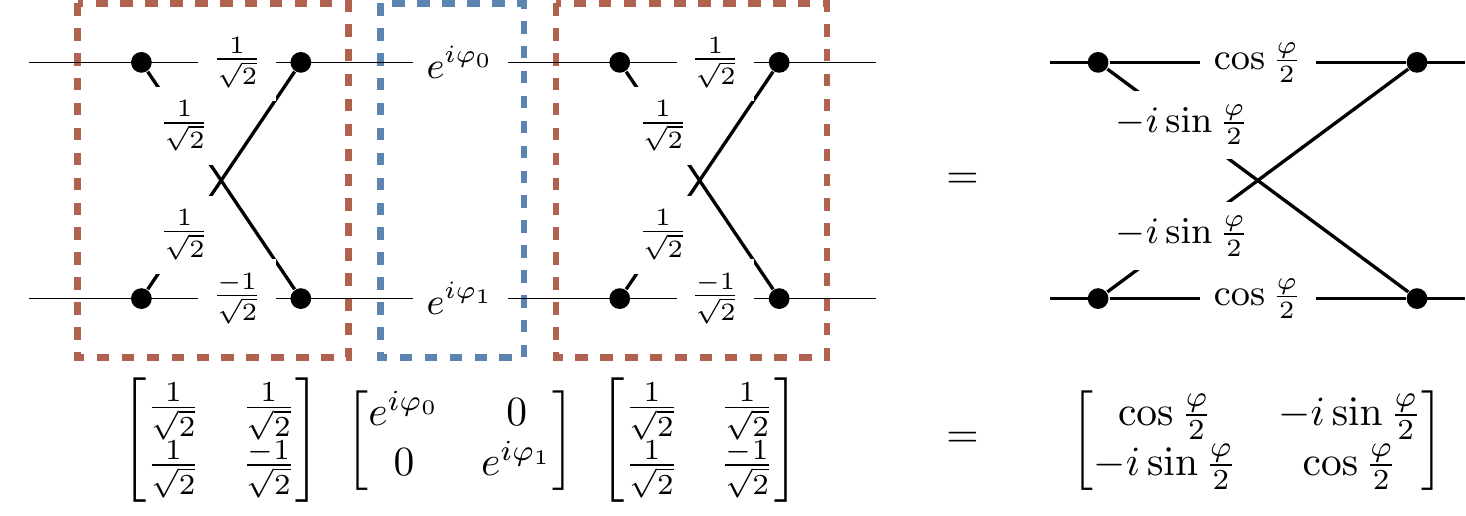1.5 Interferometers
One of the most fundamental family of experiments for our purposes are so-called interference experiments, modern versions of which are performed using internal degrees of freedom of atoms and ions. For example, Ramsey interferometry, named after American physicist Norman Ramsey (1915–2011), is a generic name for an interference experiment in which atoms are sent through two separate “resonant interaction” zones, known as Ramsey zones, separated by an intermediate “dispersive interaction” zone.
Many beautiful experiments of this type were carried out in the 1990s in Serge Haroche’s lab at the Ecole Normale Supérieure in Paris.
Rubidium atoms were sent through two separate interaction zones (resonant interaction in the first and the third cavity) separated by a phase inducing dispersive interaction zone (the central cavity).
The atoms were subsequently measured, via a selective ionisation, and found to be in one of the two preselected energy states, here labeled as

Figure 1.1: A schematic diagram of a Ramsey interference experiment.
The three rectangular boxes in Figure 1.1 represent three cavities, each cavity being an arrangement of mirrors which traps electromagnetic field (think about standing waves in between two mirrors).
The oval shapes represent rubidium atoms with two preselected energy states28 labelled as
We can understand this interference better if we follow the two internal states of the atom as it moves through the three cavities.

Figure 1.2: The Ramsey interferometer represented as an abstract diagram, to be read from left to right. The line segments represent transitions between the two states,
Suppose we are interested in the probability that the atom, initially in state
We can see from the diagram that
The corresponding probability (i.e. that an atom, initially in state
You should recognise the first term
The effect of each interaction on atomic states can be described by a matrix of transition amplitudes, as illustrated in Figure 1.3, and then the sequence of independent interactions is described by the product of these matrices: we compile all the

Figure 1.3: The Ramsey interferometer represented as an abstract diagram (matrix approach). Here we have omitted the
In general, quantum operation
If the language of energy states of atoms is unfamiliar to you, don’t worry! Here we are just trying to give some physical motivation for one of the fundamental quantum circuits which we will see pop up time and time again. Vaguely, though, you can just have in your mind the idea that atoms have a certain amount of energy at any given time, but the amount that they can have is one of a number of fixed amounts, depending on the chemistry of the atom. This is in fact one of the key principles in the history of quantum physics, and is the reason for the word “quantum”.↩︎
From the classical probability theory perspective the resonant interaction induces a random switch between
|0\rangle and|1\rangle (why?) and the dispersive interaction has no effect on these two states (why?). One random switch followed by another random switch is exactly the same as a single random switch (if you flip a coin twice and just observe the last result, this is probabilistically the same as just flipping the coin once), which gives\frac{1}{2} for the probability that input|0\rangle becomes output|1\rangle .↩︎Note the order of the matrices: the composition “
A followed byB ” isBA , notAB ! This reflects the fact that, in linear algebra, we apply a matrix to a vector on the left, i.e.A applied tov is writtenAv .↩︎